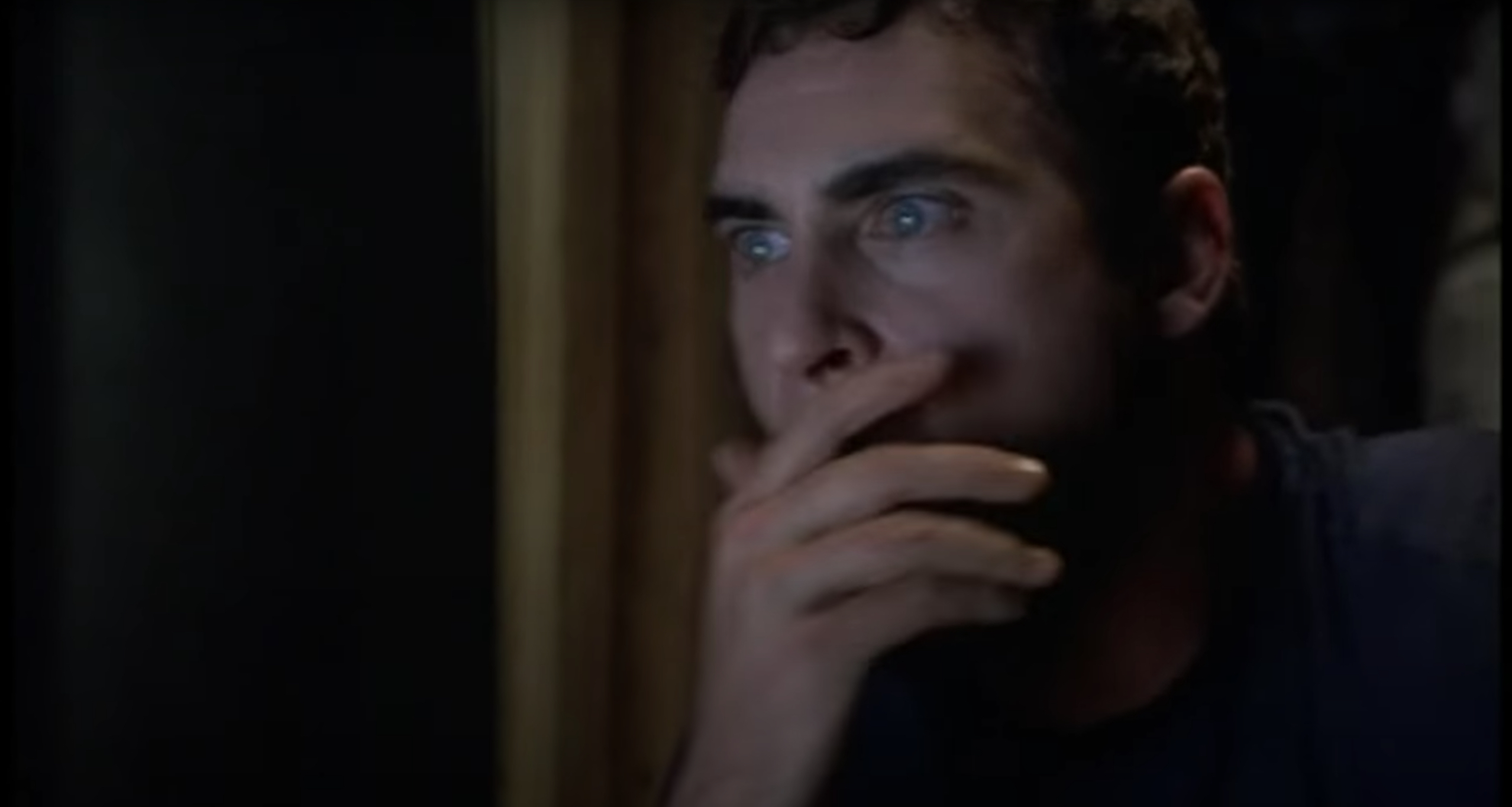Some art warps the historical record. My recall from ages 5-18 is certainly higher-res than my recall over the last decade, but there are gaps surrounding my first viewing of a terrifying bit of a movie, a scene so unsettling that the very memory was suppressed.
I remember seeing it in a theater, between fingers. But I also remember cowering under a blanket. Was a blanket brought to the theater, and if so, why? I have always relished the theater's light refrigeration. Was it just a coat? These questions may never be resolved, and neither will this one: Has there been a more perfect 95 seconds of fear hiding in Signs, an otherwise dumb movie that I will nevertheless relish to the end of my days? With the graces of the YouTube account "SignsMoviePage," this scene lives eternal, and I still revisit it every spooky season.
We start with Joaquin Phoenix's character Merrill Hess, slack-jawed in front of a screen, alone in a dim room and surrounded by many sweatshirts, during an international disaster. Yes, this should not feel too foreign a sensation. The score begins to swell. Signs is driven by simple, panicked piano lines, which circle their subject in increasingly delirious loops, subsiding, rising again, never quite falling out of earshot. I have always been a sucker for the in-universe news broadcast; Merrill leans in closer to his TV to take it in.
"What you're about to see"—and here is the anchor's pregnant pause where, at age 11, I realized my shit was about to get thoroughly rocked—"may disturb you."
That quavering camcorder footage from the Brazilian birthday party brings reliable waves of nostalgic: an abandoned cake, party hats jostling into the frame, something unseen in the foliage, all of it falling into and out of focus because the filmer can't figure out what's happening. But clearly, everyone is inside because there is something horrible outside. The score layers on top of the children's cacophony; I am getting more scared, thinking about how scared they are. They relocate to a window with a view of the alley. They see nothing at first. The fear ratchets up again, to that classic breaking point, where a character is simply so terrified that they lapse out of their native Portuguese and into English for the benefit of an international audience. "It's behind!" shouts the child, helpfully. And then comes the alien, ambling right by, apparently staring straight at the lens—at the person holding the camcorder, at Joaquin, at us.
On first viewing, my reaction could not possibly have been much more measured than Joaquin's; I was likely closer to that dog in the house in Brazil. It is a moment of abject pixelated terror. Joaquin, a tinfoil-hat type who has apparently been recording on VHS, instantly rewinds and replays an event that horrifies him. This is another familiar sensation, and a task for which society has only developed more effective and perverse tools in years since. He pauses his tape right as the alien is midway through its horrible walk. Unmoving, it twitches on the screen.
I hate its lurching gait, its vague arm gesture toward the camera, its wispy silhouette and putty-like, featureless face. Really, the whole package. At the climax, one such alien is perfectly visible in the middle of the Hesses' living room, which is, unsurprisingly, the movie's undoing. The atmosphere successfully maintained over the previous hour-plus dissipates as soon as you see it cock its clicking, sloping, stupid head under indoor lighting. By that point, I'm just antsy for the baseball bat to finish the job. But witnessed through these layers of distortion and remove—a rewound and frozen news broadcast, which is itself relaying a home video from thousands of miles away—the alien is perfect. It got me. It still gets me. No movie has offered a clearer lesson in that horror platitude: You don't want too clean a look at the scary thing when you can instead have steady, glancing intimations of it. This should have never come down to a question of CGI budget.
On this particular Hallowe'en, I found a fresh layer of unintentional meta-horror in Signs. It is, after all, a vision of all humanity uniting against a common non-human antagonist, overcoming any old cultural fissures within or between nations, getting clear on a solution, and grasping that the bad guys, who are happily overtaking a planet that is 71 percent water, just needed to be hosed down with more water.







